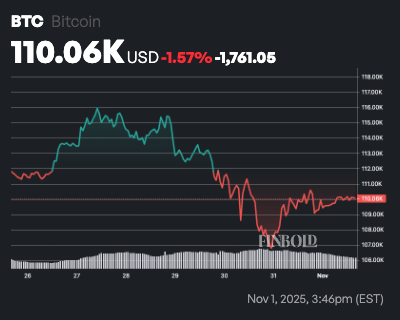With the expected rise in Bitcoin (BTC) in October not materializing, attention has shifted to the performance of Bitcoin (BTC) assets in November.
In fact, Bitcoin experienced significant volatility throughout October, ultimately ending the month just above the $110,000 support zone.
Despite this mixed performance, artificial intelligence insights from ChatGPT suggest that the asset could record modest gains through November and regain the $120,000 resistance level.
Overall, Bitcoin is trading at $110,071 at the time of writing, showing signs of stabilizing after a 3.6% drop in October. The market is holding firm above the key support level between $107,000 and $109,000, and traders are defending this zone among neutral to bullish momentum indicators.

Regarding the price outlook, ChatGPT analysis suggests that Bitcoin’s near-term direction will depend on whether it can break out of the next resistance range between $115,500 and $118,000.
A decisive move above that level could trigger strong buying momentum and push the price towards $124,800-$132,400, in line with the Fibonacci extension target derived from previous market movements.
Despite a slight slowdown in ETF inflows, institutional investors are holding positions, and on-chain data shows a steady increase in wallets holding 1 Bitcoin or more, indicating long-term accumulation rather than distribution. The Fear and Greed Index remains near 45, reflecting cautious optimism among market participants.
Bitcoin price levels to watch
AI-based modeling assigns a 50% probability to the base scenario that Bitcoin ends November between $118,000 and $122,000, supported by seasonal strength and steady inflows.
Assuming a breakout above resistance and renewed appetite for risk assets, there is a 45% chance of a more bullish outcome with prices reaching $126,000 to $132,000. A bearish scenario in which prices retreat into the $102,000 to $108,000 range is thought to have only a 5% chance.
This prediction is consistent with Bitcoin’s historic November performance, which typically resulted in a median increase of around 11%.
Featured image via Shutterstock


